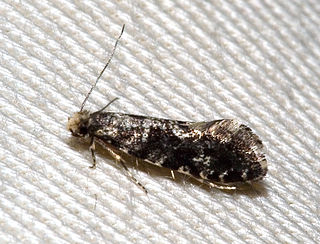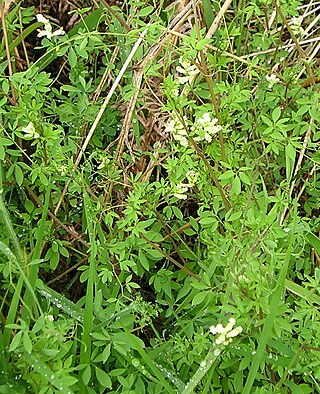
The Ordovician is a geologic period and system, the second of six periods of the Paleozoic Era, and the second of twelve periods of the Phanerozoic Eon. The Ordovician spans 41.6 million years from the end of the Cambrian Period 486.85 Ma to the start of the Silurian Period 443.1 Ma.

Malesia is a biogeographical region straddling the Equator and the boundaries of the Indomalayan and Australasian realms, and also a phytogeographical floristic region in the Paleotropical Kingdom. The original definition by the World Geographical Scheme for Recording Plant Distributions included Papuasia, but this was split off in its 2001 version.

The Big Bend is part of the Trans-Pecos region in southwestern Texas, United States along the border with Mexico, north of the prominent bend in the Rio Grande for which the region is named. Here the Rio Grande passes between the Chisos Mountains in Texas and the Sierra Madre Oriental in Mexico as it changes from running east-southeast to north-northeast. The region covers three counties: Presidio County to the west, Brewster County to the east, and Jeff Davis County to the north.
Fauna is a Roman rustic goddess said in differing ancient sources to be the wife, sister, or daughter of Faunus. Varro regarded her as the female counterpart of Faunus, and said that the fauni all had prophetic powers. She is also called Fatua or Fenta Fauna.

Fauna is all of the animal life present in a particular region or time. The corresponding terms for plants and fungi are flora and funga, respectively. Flora, fauna, funga and other forms of life are collectively referred to as biota. Zoologists and paleontologists use fauna to refer to a typical collection of animals found in a specific time or place, e.g. the "Sonoran Desert fauna" or the "Burgess Shale fauna". Paleontologists sometimes refer to a sequence of faunal stages, which is a series of rocks all containing similar fossils. The study of animals of a particular region is called faunistics.

Flora is all the plant life present in a particular region or time, generally the naturally occurring (indigenous) native plants. The corresponding term for animals is fauna, and for fungi, it is funga. Sometimes bacteria and fungi are also referred to as flora as in the terms gut flora or skin flora for purposes of specificity.

Tineidae is a family of moths in the order Lepidoptera described by Pierre André Latreille in 1810. Collectively, they are known as fungus moths or tineid moths. The family contains considerably more than 3,000 species in more than 300 genera. Most of the tineid moths are small or medium-sized, with wings held roofwise over the body when at rest. They are particularly common in the Palaearctic, but many occur elsewhere, and some are found very widely as introduced species.
Hacks Lagoon Conservation Park is a protected area in the Australian state of South Australia located in the locality of Bool Lagoon about 24 kilometres south of the municipal seat of Naracoorte.

Liverpool Bay is a bay of the Irish Sea between northeast Wales, Cheshire, Lancashire and Merseyside to the east of the Irish Sea. The bay is a classic example of a region of freshwater influence. Liverpool Bay has historically suffered from reduced oxygen content from prior massive discharges of sewage sludge, according to C. Michael Hogan.

Charles Thomas Bingham was an Irish military officer and entomologist.

The fauna of Puerto Rico is similar to other island archipelago faunas, with high endemism, and low, skewed taxonomic diversity. Bats are the only extant native terrestrial mammals in Puerto Rico. All other terrestrial mammals in the area were introduced by humans, and include species such as cats, goats, sheep, the small Indian mongoose, and escaped monkeys. Marine mammals include dolphins, manatees, and whales. Of the 349 bird species, about 120 breed in the archipelago, and 47.5% are accidental or rare.
Armintomys is an extinct genus of rodent from North America related to jerboas and jumping mice. It is the only genus in the family Armintomyidae. It lived during the early Eocene, and is the oldest known example of a hystricomorphous zygomasseteric dentition. In addition, Armintomys is also the oldest known rodent that had an incisor enamel transition from pauciserial to uniserial. Its remains have only been found in the Wind River Basin in Wyoming, and could be found there during the species' existence on Earth. It was previously assumed that Armintomys belonged to the Dipodoidea family, but has since been understood to have been part of an early radiation of dipodoid rodents, but was not directly ancestral to any later dipodoids, thus it was recategorized into its own family.

Friedrich Joseph Adalbert Seitz, was a German physician and entomologist who specialised in Lepidoptera. He was a director of the Frankfurt zoo from 1893 to 1908 and is best known for editing the multivolume reference on the butterflies and larger moths of the world Die Gross-Schmetterlinge der Erde which continued after his death.
Fauna Europaea is a database of the scientific names and distribution of all living multicellular European land and fresh-water animals. It serves as a standard taxonomic source for animal taxonomy within the Pan-European Species directories Infrastructure (PESI). As of June 2020, Fauna Europaea reported that their database contained 235,708 taxon names and 173,654 species names.
The Australian Plant Name Index (APNI) is an online database of all published names of Australian vascular plants. It covers all names, whether current names, synonyms or invalid names. It includes bibliographic and typification details, information from the Australian Plant Census including distribution by state, links to other resources such as specimen collection maps and plant photographs, and the facility for notes and comments on other aspects.

Ceratocapnos claviculata, the climbing corydalis, is a weak scrambling plant in the family Papaveraceae. It is endemic to Europe, growing mostly near the Atlantic fringe.
The Australian Faunal Directory (AFD) is an online catalogue of taxonomic and biological information on all animal species known to occur within Australia. It is a database produced by the Department of Climate Change, Energy, the Environment and Water of the Government of Australia. By May 12, 2021, the Australian Faunal Directory had collected information about 126,442 species and subspecies. It includes the data from the discontinued Zoological Catalogue of Australia and is regularly updated. Started in the 1980s, its goal is compile a "list of all Australian fauna including terrestrial vertebrates, ants and marine fauna" and create an "Australian biotaxonomic information system".

Ceutorhynchini is a true weevil tribe in the subfamily Baridinae.
Tolderol Game Reserve is a protected area in the Australian state of South Australia located on the north-western side of Lake Alexandrina in the localities of Lake Alexandrina and Tolderol about 11 kilometres south-east of Langhorne Creek.
Australian online fauna & flora databases: Both the Commonwealth of Australia and its various states maintain a number of online databases which encompass both native and naturalised fauna and flora. Some are taxonomic. Some are descriptive. Some are both. Some indicate threatened or nuisance species. The list below is incomplete.











